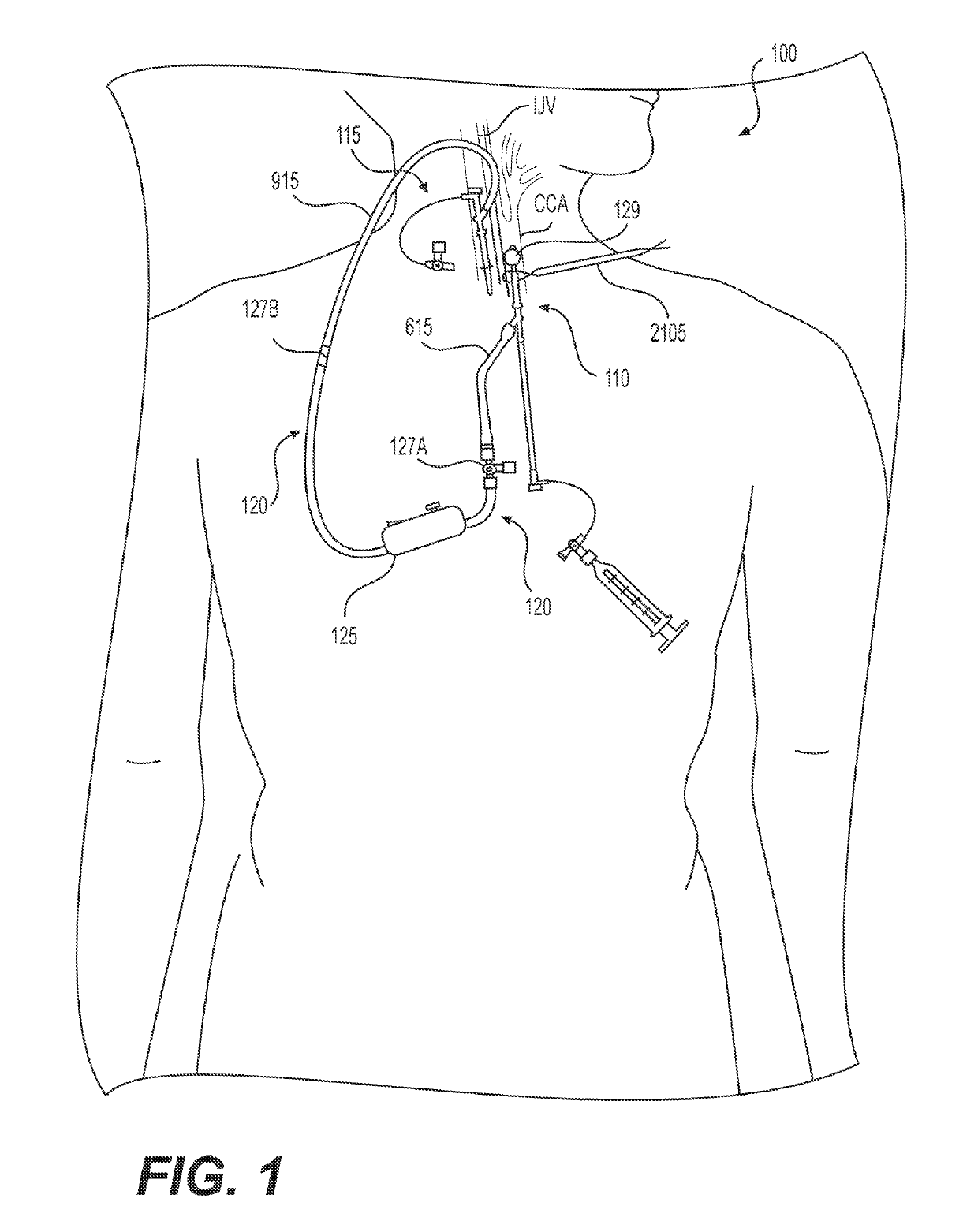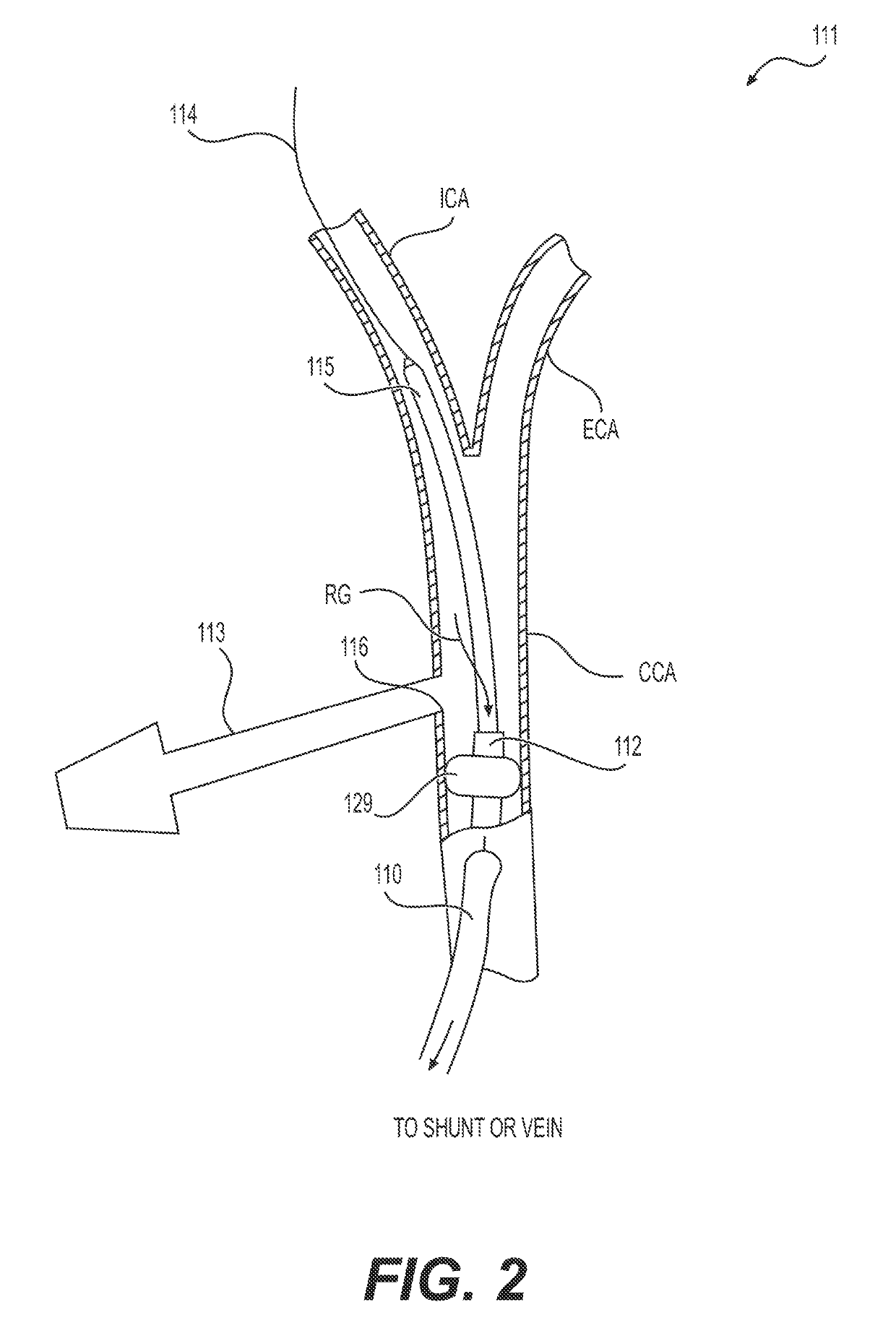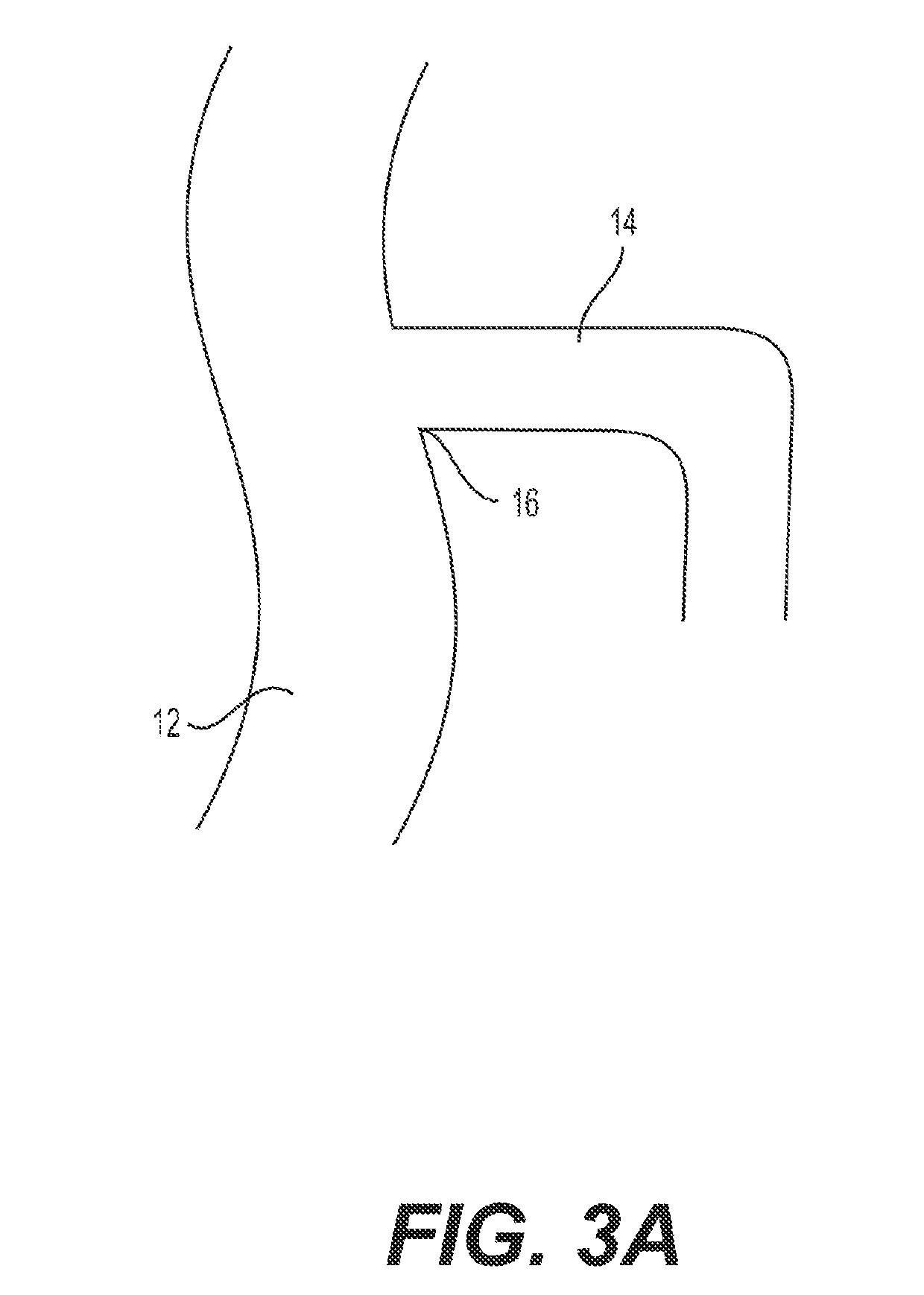Systems and methods for treating eye diseases
a technology for treating eye diseases and eye diseases, applied in the field of eye diseases, can solve problems such as deficiency in one or more aspects of current therapies, and achieve the effects of restoring or improving blood flow to the eye, restoring or improving blood flow, and altering the complement system
- Summary
- Abstract
- Description
- Claims
- Application Information
AI Technical Summary
Benefits of technology
Problems solved by technology
Method used
Image
Examples
example 1
[0305]Without being bound by theory, it is believed that compromised blood flow to the vasculature of the posterior eye directly contributes to diseases of the eye. Further, it is believed that this lack of normal blood flow may originate in the ICA, the OA, branches of the OA, have a cardiac origin, and / or combinations thereof, and be directly caused by a blockage in one or more of these vessels. This lack of sufficient blood flow directly contributes to inadequate nutrient levels seen in tissues such as the choroid, retina, optic nerve, and other ophthalmic anatomy. This blockage may manifest as stenosis, lesions, or other physiology within the ophthalmic related vasculature and compromise normal blood flow such that the posterior eye vasculature does not receive an adequate nutrient supply for maintenance of normal function. As a result, it is possible for a cascade of events to initiate which may result in various diseases of the eye.
[0306]Linear and volumetric blood flow was me...
example 2
[0308]In a cadaveric tissue, the RICA was removed and the ostium was visually examined. Blockage of the OA at the ostium was confirmed, wherein the blockage appeared to be complete. Once the section of LICA was removed, internal access to the OA ostium was gained, and a micro PTCA balloon catheter was inserted.
[0309]This test was performed to visually observe the effect of placing and inflating a balloon catheter in the OA. This (non-compliant) balloon catheter had a maximum diameter of 0.85 mm at 16 atms, with a crossing profile of 0.74 mm and a working length of approximately 5 mm. The balloon was inflated several times to approximately 12 atms maximum and the balloon was observed through the vessel. After observations, the vessel appeared to tolerate the inflations without obvious signs of damage.
example 3
[0310]A system of the present disclosure is designed to induce reverse blood flow in the cerebral vasculature during neuro interventional procedures. This system provides protection from particulate related stroke during these procedures. Enhancements to the basic system include:
[0311]CCA to IJV circuit. This pathway reduces the overall device length required to reach the target anatomy. While this procedure requires cervical access, there is no need to do femoral access and expose the patient to the potential issues related to crossing the arch. This type of connection between an artery and vein is commonly referred to as a fistula.
[0312]Addition of an in line filter to capture particulate.
[0313]Sizing the tubing, stock cocks and filter such that a minimal resistance to flow is encountered by blood as it travels through the device. It is anticipated the device will be 8.5 to 9.0 French. Maximizing the internal diameter of the various components allows for blood to flow at the most ...
PUM
 Login to View More
Login to View More Abstract
Description
Claims
Application Information
 Login to View More
Login to View More - R&D
- Intellectual Property
- Life Sciences
- Materials
- Tech Scout
- Unparalleled Data Quality
- Higher Quality Content
- 60% Fewer Hallucinations
Browse by: Latest US Patents, China's latest patents, Technical Efficacy Thesaurus, Application Domain, Technology Topic, Popular Technical Reports.
© 2025 PatSnap. All rights reserved.Legal|Privacy policy|Modern Slavery Act Transparency Statement|Sitemap|About US| Contact US: help@patsnap.com



